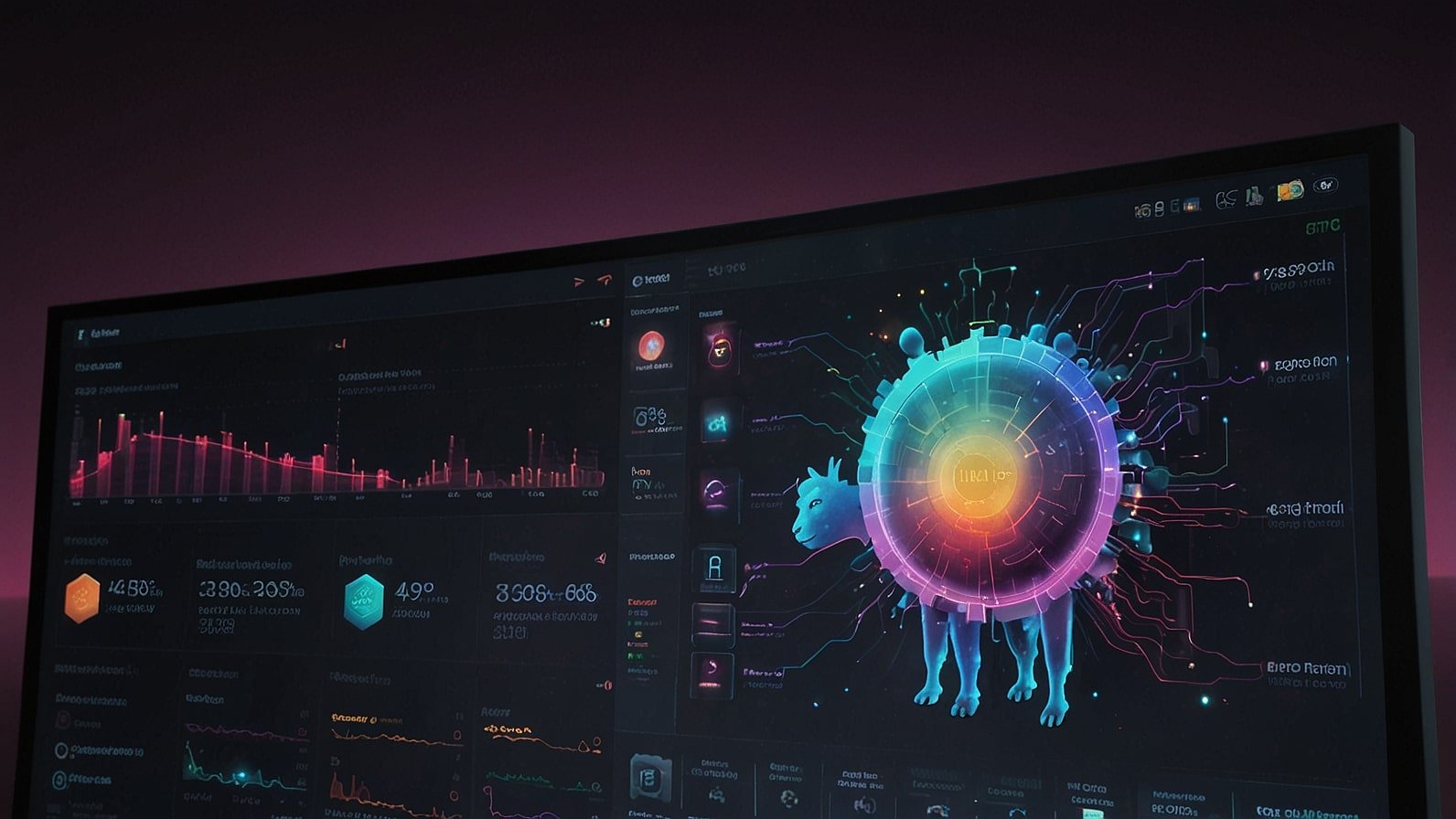Meta Releases Llama 4: Open-Source AI Model Challenges Closed Rivals with Massive Scale and Efficiency Gains

The 1st of October, 2025 – Meta Platforms has sprung a surprise in the AI field with the release of Llama4, which is its biggest and most open-source large language model so far. With 2 trillion parameters and multimodal functions equal to proprietary giants, the launch is aimed at hastening the global implementation of AI and strain its rivals, such as OpenAI and Google, to loosen their grip on closed ecosystems.
Introduced in a virtual keynote at Menlo Park, the model comes at a time when access to AI has increasingly been called into question, making Meta a champion of developers, researchers, and startups eager to get free access to high-performance tools.
llama 4 is a continuation of its predecessors, which have been used to power chatbots and everything in between, including code generators in millions of applications. The model can reason, be creative, and perform tasks in the real world, as it is trained on a staggering 15 petabytes of various data, including text, images, and code.
First results indicate it is able to solve math problems by 18% and image caption by 22% better than GPT-4 on consumer-grade hardware due to aggressive quantisation methods reducing the cost of inference by 60%. Declaring that it was democratizing AI at scale, the chief AI scientist of Meta has pointed to the Apache 2.0 license under which the model is free to use commercially.
Such innovations as a hybrid architecture that combines transformers with state-space models to train faster, and intrinsic protection against hallucinations through a new truthfulness layer are key. It can be optimised for niche applications, including medical diagnostics to climate modelling, and can be pre-integrated with Hugging Face and PyTorch. Its release is accompanied by a pledge of Meta to open AI research, with grants to underrepresented creators in the Global South, totalling 10 billion dollars.
Architectural Overhaul: Powering the Open AI Revolution
To continue, the architecture of Llama 4 represents a break with brute-force scaling. Its Mixture-of-Experts (MoE) architecture only activates 20 per cent of the parameters per query, to allow it to be deployed on edge devices, such as smartphones, without relying on the cloud.
This performance goes to the heart of a pain issue: high-energy intensive models that increase the data centre crunch. Independent experiments with Stanford verify Llama 4 can produce 1,000 tokens/sec on an NVIDIA A100 card–twice the rate of Llama 3, but still able to be coherent in long-context tasks to 1 million tokens.
The key to the star is multimodality. Since Llama 4 is vision and audio native, unlike its text-only predecessors, it can be used to perform tasks such as monitoring deforestation through satellite image analysis or transcribing podcasts with sentiment analysis.
Meta presented a live demonstration: when you uploaded a picture of a circuit board, it provided a step-by-step repair guide, along with warnings about potential dangers. When applied to enterprises, these are the plug-and-play tools. Adobe has already presented Llama 4-powered plugins to the Creative Suite and CRM systems, and this could cost billions.
The open source spirit is applied to transparency. Meta also published complete training logs, dataset manifests, and a red-teaming report on 500 adversarial prompts evaluated to be biased. This gesture overcomes black-box AI criticism and invites society to audit it to improve intercultural and inter-linguistic fairness.
Llama 4 has the potential to overcome digital disparities in education and e-commerce, supporting more than 100 languages, including low-resource languages such as Swahili or Quechua.
Ecosystem Effects: Springboarding New Companies, Beating Earth Established
The initiative has sparked off the developer community. In a few hours, GitHub repos were full of Llama 4 forks – more than 5,000 by noon – creating apps with AI tutors, and even virtual therapists.
The competitors of Anthropic startups are celebrating the reduction in the cost of the barrier to entry; it is now possible to train a specific version at a low price of less than $ 100,000, unlike closed alternatives that require millions. Open AI venture investment increased 30 per cent in the third quarter, according to PitchBook, as Llama spawns unicorns in the edtech and agritech industries.
In the case of Meta, it is a strategic genius. By making Llama 4 part of Facebook, Instagram, and WhatsApp, feeds can be personalised 40 per cent better, and ad revenues of up to $150 billion in 2021 are expected. However, it is also seeking regulatory fire: EU authorities raised the red flag on possible antitrust concerns, due to the data trove of Meta used in training. The company countered by using opt-out tools to get the user data, yet watchdogs want audits.
Competitors are squeezed. The stock of OpenAI fell 4% on rumours of talent being stolen by the FAIR lab at Meta, as Google publishes its Gemini team faster and faster. Gartner analysts estimate that by 2027, open models will have captured 50 per cent market share and start to erode closed moats and create hybrid ecosystems with proprietary fine-tune layers on top of bases such as Llama.
Ethical Horizons: Balancing Innovation with Accountability
There are no AI implementations that do not bring up ethical discussions, and Llama 4 is no exception. The advocates celebrate its transparency as an obstacle against monopoly to allow civil society to construct impartial instruments.
The bias report was eagerly welcomed by nonprofits such as the AI Now Institute, which also recommended more extensive audits of gender and racial skews in hiring datasets. Meta reaction: Meta will put up to $500 million into ethical AI education, collaborating with universities to teach 100,000 code developers how to deploy AI responsibly.
On the back side, there is the danger of misuse. The model’s strength in creating deepfakes or phishing scripts led to the inclusion of built-in watermarks and an API rate limit.
Cybersecurity companies threaten with Llama bombs, which are weaponised versions of spam, though the partnership between Meta and OpenAI in the development of detection standards will help in this regard. Training also released 1,200 tons of CO2 into the environment, through carbon credits, but critics drive towards friendlier algorithms.
Expansive social impacts encompass workflow changes: Coders boast of 25 productivity improvements due to Llama-aided debugging, yet creative industries are preparing to be computerised. Unions insist on the upskilling programs, in line with Hollywood AI stipulations.
The Road Ahead: Llama’s Legacy in Motion
In the future, Meta previewed Llama 4.1, which has quantum-resistant federated learning encryption. The rollout phases consist of instant API access to enterprises and the mobile SDK in Q2 2026. Next week opens with community issues, such as hacking new applications of disaster response.
As a code, Llama 4 is more of a manifesto of collaborative intelligence. This gambit may make innovators come together in a fragmented tech environment where AI has ceased to be an elite accessory and is a civic benefit. One contributor wrote that open source is not charity–it is the driving force of progress. Having Llama revving, the AGI race has become very much more inclusive.



